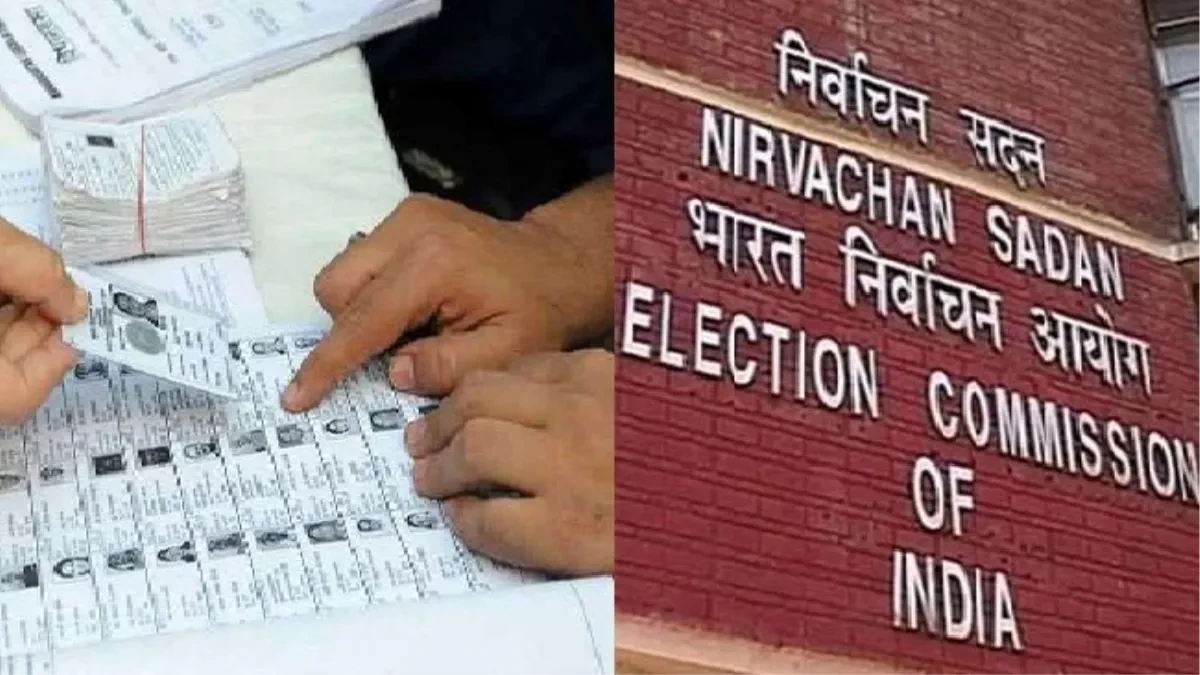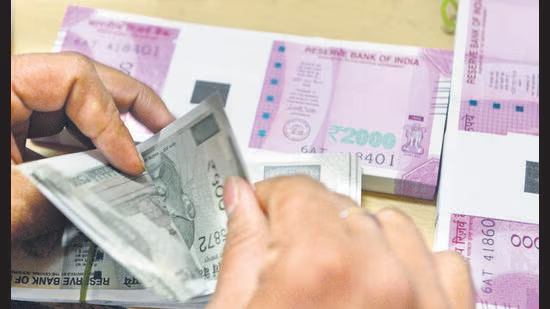- Courses
- GS Full Course 1 Year
- GS Full Course 2 Year
- GS Full Course 3 Year
- GS Full Course Till Selection
- Answer Alpha: Mains 2025 Mentorship
- MEP (Mains Enrichment Programme) Data, Facts
- Essay Target – 150+ Marks
- Online Program
- GS Recorded Course
- Polity
- Geography
- Economy
- Ancient, Medieval and Art & Culture AMAC
- Modern India, Post Independence & World History
- Environment
- Governance
- Science & Technology
- International Relations and Internal Security
- Disaster Management
- Ethics
- NCERT Current Affairs
- Indian Society and Social Issue
- NCERT- Science and Technology
- NCERT - Geography
- NCERT - Ancient History
- NCERT- World History
- NCERT Modern History
- CSAT
- 5 LAYERED ARJUNA Mentorship
- Public Administration Optional
- ABOUT US
- OUR TOPPERS
- TEST SERIES
- FREE STUDY MATERIAL
- VIDEOS
- CONTACT US
Power Markets in India
Power Markets in India
20-07-2024
- In June 2024, the government has permitted the trading of surplus electricity generated from "linkage coal" in the country's power markets due to the increasing demand during the summer.
- Coal Linkages: Coal linkage refers to the practice of purchasing coal from mines located near the power plant. Previously, power plants were required to buy coal from specific allocated coal blocks.
- Power plants can now buy coal from nearby mines. This change helps in saving money on transportation and logistics.
About Power Markets of India
- Power markets in India are systems where electricity is traded through various mechanisms and platforms, like power exchanges, allowing for flexible and efficient electrical power allocation.
- Power exchanges are key infrastructures that enable the buying and selling of electricity through transparent and competitive processes, enhancing the overall efficiency and reliability of the electricity supply system.
- Structure and Evolution: Power exchanges were 1st introduced in Europe in 1990-91 and now operate in about 50 countries worldwide.
- In India, the Electricity Act of 2003 established the framework for exchange operations, and exchanges commenced in 2008.
- The spot market was introduced in 2020 to enhance flexibility and responsiveness.
- Trading Mechanism:
- Bidding Process: Buyers bid for purchasing electricity, and sellers offer to sell.
- Market Clearing Price: The equilibrium of demand bids and supply offers determines the market clearing price at which electricity is traded.
- The equilibrium price is the only price where the amount consumers want to buy of the product, quantity demanded, is equal to the amount producers want to sell, quantity supplied.
Categories of Power Markets
- Spot Market:
- Real-time market (RTM) for near-immediate delivery. It allows for transactions that are settled almost instantly, catering to urgent power needs.
- Intraday market deals with trades conducted on the same day, but a few hours before the actual delivery. It is designed for short-term adjustments and balances in power supply and demand within the same day.
- Contract Markets:
- Day-ahead market (DAM) deals with closed auctions which are held for power delivery in 15-minute time blocks for the following day.
- Participants can plan and secure power supply a day in advance, ensuring better scheduling and reliability.
- Term-ahead market (TAM) facilitates trades for power delivery ranging from 3 hours to 11 days in advance.
Benefits of Power Markets
- Flexibility: Generators can quickly respond to short-term demand changes and sell extra power independently of long-term power purchase agreements (PPAs).
- Transparency and Reliability: Price-based demand response includes multiple parties, leading to higher transparency and reliability than bilateral contracts.
- Resource Optimisation: Market-driven methods allow generators to maximise their output and revenue, while utilities can more efficiently meet changing power demands.
Major Power Exchanges in India
-
Indian Energy Exchange Ltd (IEX):
- Dominates with over 90% market share.
- Traded approximately 110 billion units (BU) of electricity in FY 2023-24, growing 14% year-on-year.
-
Power Exchange India Limited (PXIL): India’s first institutionally promoted power exchange, providing innovative and credible solutions since 2008.
-
Hindustan Power Exchange Ltd (HPX): Offers a comprehensive market platform for various electricity products.
What is the Indian Energy Exchange?
|
Central Electricity Regulatory Commission (CERC)
- All exchanges are regulated by the Central Electricity Regulatory Commission (CERC).
- It aims to promote competition, efficiency, and economy in bulk power markets, improve supply quality, encourage investments, and advise the government on removing institutional barriers to bridge the demand-supply gap.
- CERC operates as a statutory body with quasi-judicial status under the Electricity Act 2003.
- Electricity Act 2003: It establishes Electricity Regulatory Commissions at both central and state levels (CERC and SERCs).
Instruments Related to Power Market
-
Renewable Energy Certificates (REC) Mechanism: Utilities can fulfil their Renewable Purchase Obligations (RPOs) by buying RECs, each representing 1 MWh of renewable electricity.
- Instituted in 2011, RPO mandates that large power procurers buy a specific portion of their electricity from renewable sources.
- States lacking sufficient renewable capacity can purchase RECs to meet green energy targets.
-
Power Purchase Agreements (PPAs): Long-term agreements (typically 25 years) between electricity generators and buyers (usually public utilities).
- Generators commit to supplying power at fixed rates, securing significant generating capacity.
- PPAs are inflexible and unable to adapt to dynamic market conditions.
Challenges Faced by Power Markets in India
-
Transmission Infrastructure Issues: Insufficient transmission infrastructure causes grid congestion (overcrowding), hindering (hamper) the efficient flow of electricity from generation sources to consumers.
- This is particularly problematic for integrating renewable energy sources located far from demand centers.
-
Financial Health of Discoms: Distribution Companies (Discoms) have weak finances due to high losses from inefficiencies, theft, and unpaid bills.
- These financial constraints limit their ability to invest in grid improvements and pay generators on time, negatively impacting the market.
- For example, transmission and distribution (T&D) losses in India exceed 20%, higher than the world average.
- Transmission and distribution losses are the losses that occur in transmission of electricity between the sources of supply and points of distribution.
-
Dependence on Coal and Price Instability: India's heavy reliance on coal for power generation makes the market vulnerable to price fluctuations in the global coal market.
- This dependence disrupts pricing stability and can affect generator profit margins.
-
Need for Improved Market Design: Developing effective market designs, including market coupling and capacity markets, requires significant investment in infrastructure and coordination.
- Market coupling is a process in the energy sector where bids from various power exchanges are matched to determine a uniform market clearing price for electricity trading.
- Capacity markets compensate generators not only for the electricity they produce and sell but also for their ability to generate electricity when needed.
-
Regulatory and Policy Uncertainty: The regulatory environment in India is complex and constantly changing, creating uncertainty for investors in the power sector.
-
Limited Range of Market Products: The current power market predominantly focuses on short-term trading and lacks a diverse range of market products, such as futures and derivatives contracts.
Steps to Strengthen Power Markets in India
-
Promote Market-Based Pricing: The Economic Survey 2022-23 suggests adopting a market-driven approach to power pricing.
- This can include phasing out subsidised electricity for wealthy consumers and allowing generators to set prices based on demand and supply dynamics.
-
Introduce Market Coupling: Implement market coupling to unify power prices across regions.
- Develop capacity markets with incentives to support grid reliability.
-
Address Discoms' Financial Issues: Enhance billing and collection systems to improve financial health.
- Reduce power theft and explore public-private partnerships for better financial management.
-
Encourage Renewable Energy Integration: Promote renewable energy and smart grid technologies.
- Improve grid management, efficiency, and reliability through better forecasting, storage, metering, data analytics, and automation.
-
Harmonize Regulatory Framework: Create uniform regulations across states to reduce inconsistencies and promote a cohesive (unity/interconnected) market environment.
-
Strengthen Transmission Infrastructure: Use drones for line inspection and maintenance in difficult terrains.
- Explore advanced materials for lighter, stronger, and more efficient transmission towers to enhance infrastructure.
India’s Power SectorGrowing Demand
Attractive Opportunities
Policy Support
Higher Investments
|



